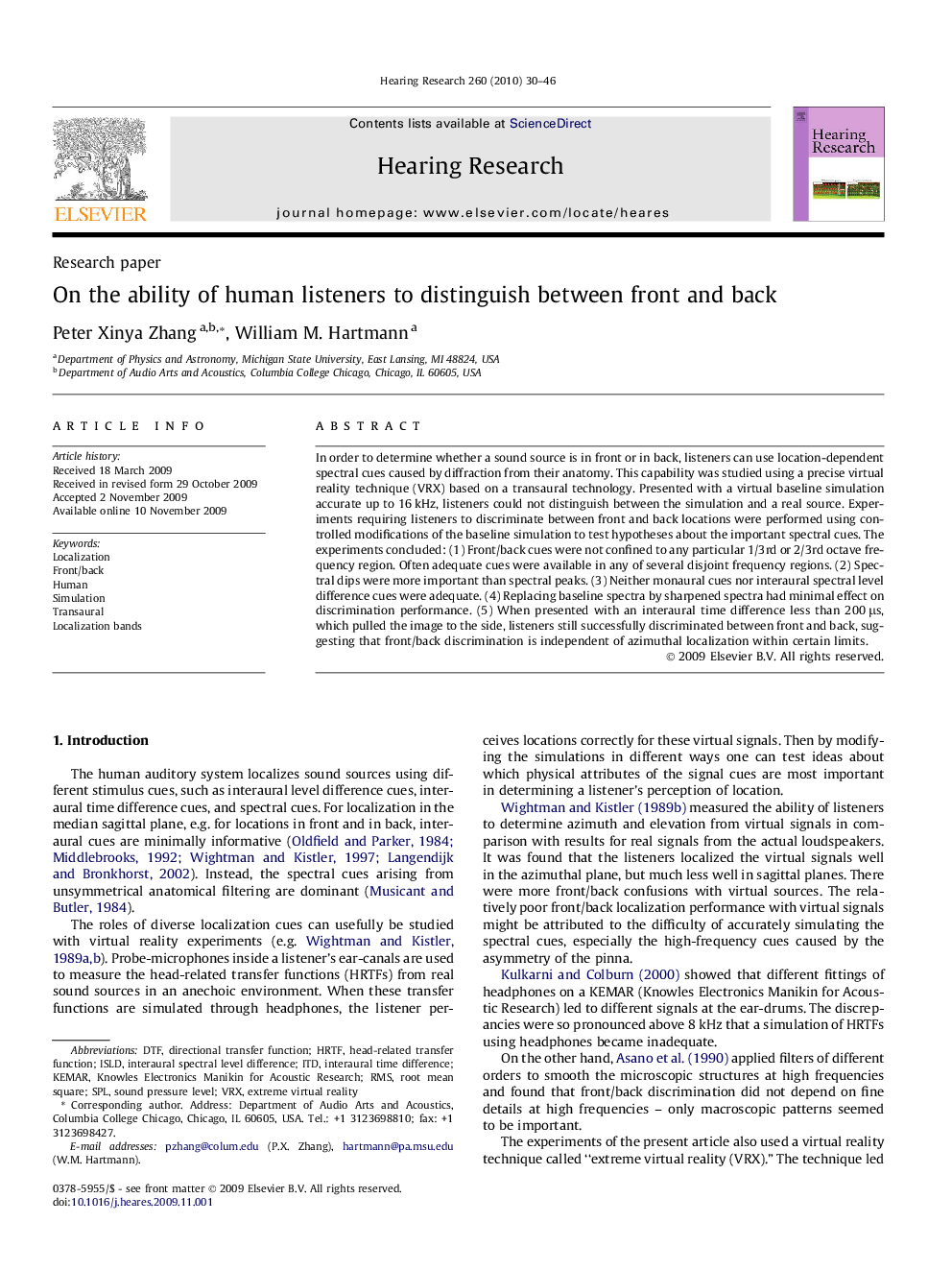| Article ID | Journal | Published Year | Pages | File Type |
|---|---|---|---|---|
| 4355693 | Hearing Research | 2010 | 17 Pages |
In order to determine whether a sound source is in front or in back, listeners can use location-dependent spectral cues caused by diffraction from their anatomy. This capability was studied using a precise virtual reality technique (VRX) based on a transaural technology. Presented with a virtual baseline simulation accurate up to 16 kHz, listeners could not distinguish between the simulation and a real source. Experiments requiring listeners to discriminate between front and back locations were performed using controlled modifications of the baseline simulation to test hypotheses about the important spectral cues. The experiments concluded: (1) Front/back cues were not confined to any particular 1/3rd or 2/3rd octave frequency region. Often adequate cues were available in any of several disjoint frequency regions. (2) Spectral dips were more important than spectral peaks. (3) Neither monaural cues nor interaural spectral level difference cues were adequate. (4) Replacing baseline spectra by sharpened spectra had minimal effect on discrimination performance. (5) When presented with an interaural time difference less than 200 μs, which pulled the image to the side, listeners still successfully discriminated between front and back, suggesting that front/back discrimination is independent of azimuthal localization within certain limits.
